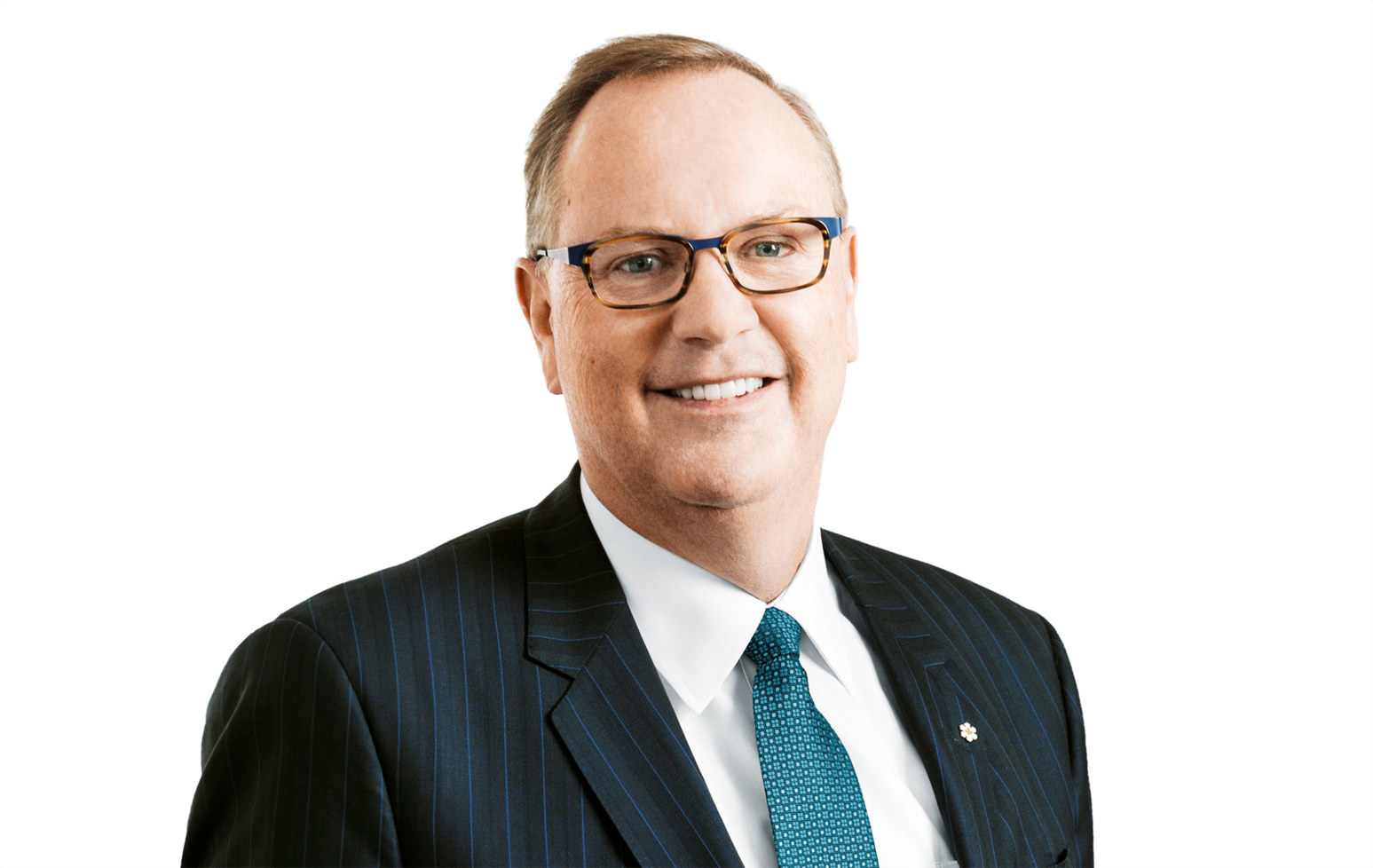Every January, Canadians and people around the world participate in Bell Let's Talk Day: a 24-hour campaign where Bell donates 5¢ to mental health initiatives for every applicable text; call; tweet and retweet using #BellLetsTalk; view of the Bell Let’s Talk Day video on Twitter, Facebook, Instagram and Snapchat; and use of the Bell Let’s Talk Facebook frame and Snapchat filter.
Ivey grad George Cope, HBA ’84, President and CEO of Bell Canada, spoke with us about Bell Let's Talk. Read his insights on how it started, what has changed over the years, and what the future has in store for the campaign.
What sparked the idea behind Bell Let’s Talk?
George Cope: Bell had put in place a clear strategy to transform our business in 2008 with a renewed dedication to leading investment and innovation in broadband communications. At the same time, we were also looking to re-energize our community investment focus. We quickly realized how little discussion there was about mental health, let alone action, despite the stark impact of mental illness on individuals, our communities and workplaces, indeed our national economy.
One in five Canadians will struggle with a mental illness in their lifetime and it’s the No. 1 cause of workplace disability, a major national health concern that costs the Canadian economy more than $50 billion a year. Yet because of the lingering stigma around mental illness, relatively little was being said or done other than by a dedicated few to move Canadian mental health forward.
After discussions with healthcare and community leaders, including a lot of insight and inspirational advice from Olympian Clara Hughes in conversations at Vancouver 2010, we launched Bell Let’s Talk that year. We realized that putting one of Canada’s oldest and most respected brands behind the mental health cause would make a tremendous difference in terms of raising awareness and fighting the stigma around the disease. Stigma is the reason that two-thirds of people with mental health issues don’t get the help they need, and changing that reality was the first step in making progress.
We built our mental health initiative with a strategy based on four action pillars – anti-stigma, care and access, new research, and workplace leadership. The most high-profile element is Bell Let’s Talk Day of course, but our initiative works all year round to drive these pillars in partnership with organizations across the country, more than 900 groups in every region so far.
How has the campaign changed over the years?
Cope: Considering where we were in 2010, I don’t think any of us imagined how quickly Canadians would embrace the cause when we began Bell Let’s Talk. The success of the initiative in getting people talking about mental health reflects the fact that all of us are affected in some way, as individuals, our family or friends, in our communities and our workplaces, and that it was high time to make a difference.
Mental illness moved quickly from being an issue kept very much in the shadows to a high-profile subject that people are willing to talk about very openly and in an action-oriented way. Engagement in the campaign by Canadians everywhere, including leaders up to the Prime Minister, has been incredible, and we’ve seen participation here in Canada and worldwide grow every year. When influencers like Anderson Cooper, Ellen DeGeneres and even the Royal Family are talking about a made-in-Canada mental health program, you know you’ve got people’s attention.
We’ve refined the program considerably over the years with advice from mental health leaders and the community, for example creating dedicated community funds for grassroots organizations, Indigenous peoples and military service members and veterans, in addition to our major gifts to hospitals, universities and other care and research organizations. But I’d say the biggest change from 2010 is that people are now calling us about mental health, to offer their help with Bell Let’s Talk or to ask for advice in applying mental health best practices in their own workplaces, rather than it just being the other way around.
Where do you see it going next?
Cope: Bell Let’s Talk launched in 2010 as a five-year, $50-million program, and in 2015 we extended the initiative by another five years to 2020 with a new funding target of $100 million – based on our original anchor donation of $50 million plus Bell funding based on overall Bell Let’s Talk Day engagement each year.
We actually expect to exceed that $100 million target on this Bell Let’s Talk Day rather than next year as we achieve another milestone – a billion total messages of support for mental health since the first Bell Let’s Talk Day in January 2011. We base our funding on engagement in the mental health cause, as people send messages of support or otherwise participate across multiple communications platforms – talk, text and social media platforms like Twitter, Facebook, Instagram and Snapchat – at no cost to them. Bell makes the actual donations; we just want you to be part of the conversation.
I see international engagement in Bell Let’s Talk continuing to grow, which I think reflects a universal desire for progress in mental health everywhere. I also think we’ll see continued progress in government engagement and action. We’ve worked closely with Ottawa, the provinces and Indigenous communities on various mental health initiatives, but the need for more investment and action is clearly there. Will we take the Bell Let’s Talk program even further now that we’re set to achieve our $100 million objective? As I said, the need is still there. Stay tuned!
*Note from the author: Bell Let's Talk Day 2019 is January 30 – today! Participate on social media using #BellLetsTalk and help fight the stigma.



